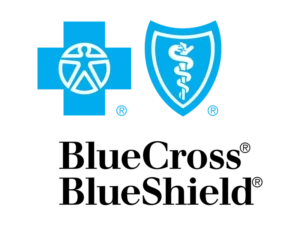Nervous Breakdowns in Teens: Common Causes and How to Respond

Teenagers today may be facing a striking level of emotional strain. According to the CDC, 39.7% of students have experienced persistent hopelessness and sadness, 28.5% experienced poor mental health, and 20.4% have considered attempting suicide.¹
For some, teenage stress overload can lead to a nervous breakdown. While “nervous breakdown” isn’t a clinical term, it’s often used to describe what happens when a teen’s internal system can no longer cope with the stress they’re carrying. In other words, it’s when mental and emotional resources become so overwhelmed that functioning begins to unravel.
By understanding what causes nervous breakdowns in teens, we can better recognize the early signs and offer timely, effective support before the collapse becomes a crisis. A mental health professional is always at hand to walk you through this process, but this guide can also help, as it explores:
- What causes nervous breakdowns in teens
- The signs and symptoms of emotional overload
- How caregivers can respond to and support a teen going through a nervous breakdown
- Treatment options for teen nervous breakdowns
- How Mission Prep can help with teenage stress overload

What Causes Nervous Breakdowns in Teens?
A nervous breakdown in teens is usually the final stop after months of rising academic pressure, social stress, family tension, or untreated trauma. For some people, a nervous breakdown comes as a result of a single crisis. And for other people, a nervous breakdown happens after a slow build-up of multiple difficult experiences.
In our teen years, the brain is still in flux – developing critical emotional regulation and stress-processing circuits, particularly in the prefrontal cortex and limbic system. When these systems are repeatedly overloaded, especially without supportive coping strategies or mental health resources, the risk of emotional collapse can rise significantly.
Additionally, teenagers are particularly vulnerable to breakdowns because they’re navigating a mix of internal and external stressors, including:
- Identity formation
- Changing family roles
- Academic milestones
- Peer relationships
- Potential exposure to trauma or instability
The complexity of these factors means that youth breakdown risk factors are rarely isolated. Instead, they often accumulate.
Mental Health Triggers in Adolescents
Teens often experience a range of emotional changes and challenges that can impact their mental health. Some of the following may be triggers for a nervous breakdown or other mental health concerns:
Academic Pressure and Anxiety:
Constant performance demands, perfectionism, test anxiety, or fear of failure can lead to long-term mental burnout in teens, especially when achievements are tied to self-worth.²
Family Pressure and Mental Health:
High parental expectations, lack of emotional support, or family conflict can erode resilience over time, especially when teens feel responsible for keeping the peace.⁴
Social Stress and Youth Breakdowns:
Peer comparison, fear of judgment, or pressure to “fit in” through social media or in-person dynamics can dysregulate a teen’s nervous system, especially in those with sensitive temperaments. This can lead to social anxiety. Further, difficulties like bullying, social exclusion, or learning differences often go unnoticed but may fuel chronic teenage stress overload behind the scenes. Each of these issues could lead to school-related breakdowns.3-5
Unresolved Trauma or Grief:
Exposure to violence, emotional neglect, loss, or other mental health triggers in adolescence can cause the nervous system to remain in a chronic state of alert, eventually leading to collapse.⁶
Teen Perfectionism and Stress:
High-achieving teens are often praised for their discipline but may internalize an unhealthy need to be flawless, creating a quiet pipeline to emotional overload symptoms and breakdown.⁷
Hormonal and Neurological Changes:
Puberty brings rapid shifts in brain chemistry and hormonal regulation, which may intensify mood disorders and amplify vulnerability to behavioral breakdown causes in teens.⁸
Lack of Sleep or Basic Self-Care:
Chronic sleep deprivation in teens, poor nutrition, and digital overstimulation can all compound stress, leaving the body and mind without the resources needed to process emotional strain.⁹
By identifying the pressures stacking up beneath the surface, mental health professionals can intervene with support before these pressures become too heavy to manage.
Emotional Overload Symptoms
Most teens don’t say the words “I’m emotionally overloaded.” Instead, they show it. Emotional overload can show up in a number of ways. For instance, thoughts race, moods swing, and even small tasks can feel impossible. Together, these signs are a quiet warning that the system is starting to fray.
Early emotional overload symptoms often appear long before a full nervous breakdown. This is why early recognition matters. For teens, especially those under constant academic pressure and anxiety, emotional overload doesn’t always look like sadness. It can just as easily show up as avoidance, anger, or mental fog.
Common signs of emotional overload in teens to look for include:
- Frequent mood swings or emotional outbursts
- Irritability or an unusually short temper
- Exhaustion and lack of motivation despite adequate rest
- Crying spells or, conversely, emotional numbness
- Withdrawal from friends, family, or hobbies
- Difficulty concentrating or completing simple tasks
- Unexplained stomachaches or headaches
- Changes in sleep or eating patterns
Sometimes, symptoms blend into what we call “teen crisis warning signs,” but emotional overload doesn’t always hit as quickly as a crisis. For many, it’s a slow emotional unraveling. For example, emotional overload could show up as a quiet shift in behavior that’s easy to miss. One late assignment might become five, a skipped meal may become a pattern, or a teen who once chatted openly now answers everything with “I’m fine.”
Emotional overload could also set the stage for a more serious behavioral breakdown if it goes unnoticed. When the brain is under constant pressure, whether from social stress, academic demands, or family tension, over time, even small challenges can feel impossible.
How to Respond to a Teen Nervous Breakdown
When a teenager reaches a breaking point, there might be panic, but also silence, shutdown, or irritability. It can look different from person to person. The most important thing to remember is this: they’re not trying to be difficult. Their nervous system is overwhelmed, and they need a steady adult presence.
The following are ways to respond to a teen nervous breakdown:
- Stay grounded, even if they’re not: Teens in crisis borrow nervous system cues from others. If you panic, this could confirm for them that the world isn’t safe. But if you stay steady, with a soft voice and slow movements, they’re more likely to settle.
- Acknowledge their pain without jumping to fix it: Phrases like “That sounds like a lot,” or “I’m here with you” can go a long way. When teens feel seen, their brains begin to exit crisis mode. Validation isn’t agreement, but it provides a sense of safety.
- Avoid minimizing: Comments like “It’s not that bad” or “Just focus” may add pressure. In teenage stress overload, the brain isn’t wired for logic. It needs connection to feel able to calm.
- Help name what’s happening: Teens may not have words for a mental burnout or emotional collapse. Try phrases like, “It seems like everything’s built up. Maybe your mind and body are just done holding it all in.”
- Look for patterns: Most youth breakdown risk factors build gradually. Is there a history of school overload or conflict at home? Also, try to detect signs of perfectionism or past trauma resurfacing.
- Get professional help early: You don’t have to wait for a full collapse to get help. Therapists trained in adolescent mental health can help unpack stressors, teach regulation tools, and prevent school-related breakdowns from repeating.
Treatment Options for Nervous Breakdowns in Teens
A nervous breakdown is a signal that a teen’s emotional bandwidth has been pushed beyond capacity. Recovery starts by listening to what this signal is trying to say. Then, provide the right kind of support to stabilize the nervous system, explore underlying causes, and help them build resilience.
Treatment looks different for every teen, but the following are some of the most effective approaches:
Trauma-Informed Therapy
When trauma leads to breakdowns, teens need more than just coping tools. Trauma-informed therapists help teens process difficult memories, reframe internal narratives, and develop emotional regulation. Therapies like EMDR, somatic therapy, or cognitive processing therapy are often used when unresolved trauma plays a role in a breakdown.¹⁰
Cognitive Behavioral Therapy (CBT)
CBT is a well-researched therapy for adolescent mental health. It helps teens identify distorted thought patterns linked to teen perfectionism and stress, anxiety, or hopelessness.¹¹ For those with academic pressure and anxiety, CBT teaches them how to challenge all-or-nothing thinking and develop healthier expectations.
Family-Based Approaches
Breakdowns rarely happen in isolation. Family pressure and mental health often intersect, and therapy that includes the family system can help identify unspoken dynamics that contribute to stress. Family therapy also supports better communication and promotes emotional safety at home.¹²
School Support Plans
When a breakdown is tied to school-related breakdowns or academic stress, accommodations may be necessary. Mental health professionals can work with schools to create reduced workload plans, offer exam flexibility, or advocate for mental health days. These steps may help the teen recover and reduce the risk of future episodes.
Peer Group Therapy or Support Groups
Adolescents benefit from knowing they’re not alone. In group therapy settings, teens can hear from others who’ve faced emotional overload symptoms, social stress, or burnout. This shared experience normalizes struggles and often restores self-worth faster than individual therapy alone.¹³
Lifestyle Stabilization
Recovery is both emotional and physical. Sleep, nutrition, hydration, and movement are all essential parts of the mental health recovery process.¹⁴ Professionals often work with families to reset daily rhythms and reduce mental health triggers in adolescence, like screen overload or overly busy environments.
Psychiatric Evaluation When Needed
If mental health symptoms are severe with persistent low mood, suicidal thoughts, or complete withdrawal, a psychiatric evaluation may help determine if medication could support recovery. This approach is often short-term, while therapeutic work continues.

Reach Out to Mission Prep for Treatment of Teenage Stress Overload
At Mission Prep, we understand how overwhelming it can be when your teen is in crisis. Whether it’s a clear emotional collapse or a quiet build-up of signs, knowing what to do can be challenging. Our team specializes in supporting teens facing pressures that often lead to nervous breakdowns.
We take an individualized, trauma-informed approach to care. This means we don’t just treat symptoms, but help teens understand the deeper patterns driving distress. From mental burnout in teens to social stress and youth breakdowns, our team provides expert, evidence-based support designed for the unique needs of each adolescent.
If your teen is showing signs of emotional overload, it’s never too early to seek help. And if they’ve already experienced a full breakdown, recovery is still entirely possible – especially with the right care and connection. Reach out to Mission Prep to discuss possible treatment options today.
References
- Verlenden, J. V., Fodeman, A., Wilkins, N., Jones, S. E., Moore, S., Cornett, K., Sims, V., Saelee, R., & Brener, N. D. (2024). Mental health and suicide risk among high school students and protective factors—Youth Risk Behavior Survey, United States, 2023. MMWR Supplements, 73(4), 79–86. https://www.cdc.gov/mmwr/volumes/73/su/su7304a9.htm
- Fernández-García, O., Gil-Llario, M. D., Castro-Calvo, J., Morell-Mengual, V., Ballester-Arnal, R., & Estruch-García, V. (2022). Academic perfectionism, psychological well-being, and suicidal ideation in college students. International Journal of Environmental Research and Public Health, 20(1), 85. https://pmc.ncbi.nlm.nih.gov/articles/PMC9819691/
- Arseneault, L. (2018). Annual research review: The persistent and pervasive impact of being bullied in childhood and adolescence: Implications for policy and practice. Journal of Child Psychology and Psychiatry, and Allied Disciplines, 59(4), 405–421. https://pmc.ncbi.nlm.nih.gov/articles/PMC6542665/
- Zhang, F., & Yang, R. (2025). Parental expectations and adolescents’ happiness: The role of self-efficacy and connectedness. BMC Psychology, 13(1), 24. https://pmc.ncbi.nlm.nih.gov/articles/PMC11721572/
- Leigh, E., & Clark, D. M. (2018). Understanding social anxiety disorder in adolescents and improving treatment outcomes: Applying the cognitive model of Clark and Wells (1995). Clinical Child and Family Psychology Review, 21(3), 388–414. https://pmc.ncbi.nlm.nih.gov/articles/PMC6447508/
- United Nations. (n.d.). Hidden scars: How violence harms the mental health of children. Digital Library. Retrieved July 23, 2025, from https://digitallibrary.un.org/record/3936557/files/hidden_scars.pdf
- Haspolat, N. K., & Yalçın, İ. (2023). Psychological symptoms in high achieving students: The multiple mediating effects of parental achievement pressure, perfectionism, and academic expectation stress. Psychology in the Schools, 60(11), 4721–4739. https://www.researchgate.net/publication/372146820_Psychological_symptoms_in_high_achieving_students_The_multiple_mediating_effects_of_parental_achievement_pressure_perfectionism_and_academic_expectation_stress
- Pfeifer, J. H., & Allen, N. B. (2021). Puberty initiates cascading relationships between neurodevelopmental, social, and internalizing processes across adolescence. Biological Psychiatry, 89(2), 99–108. https://pmc.ncbi.nlm.nih.gov/articles/PMC8494463/
- Uccella, S., Cordani, R., Salfi, F., Gorgoni, M., Scarpelli, S., Gemignani, A., Geoffroy, P. A., De Gennaro, L., Palagini, L., Ferrara, M., & Nobili, L. (2023). Sleep deprivation and insomnia in adolescence: Implications for mental health. Brain Sciences, 13(4), 569. https://pmc.ncbi.nlm.nih.gov/articles/PMC10136689/
- Shapiro, F. (2014). The role of eye movement desensitization and reprocessing (EMDR) therapy in medicine: Addressing the psychological and physical symptoms stemming from adverse life experiences. The Permanente Journal, 18(1), 71–77. https://pmc.ncbi.nlm.nih.gov/articles/PMC3951033/
- Pegg, S., Hill, K., Argiros, A., Olatunji, B. O., & Kujawa, A. (2022). Cognitive behavioral therapy for anxiety disorders in youth: Efficacy, moderators, and new advances in predicting outcomes. Current Psychiatry Reports, 24(12), 853–859. https://pmc.ncbi.nlm.nih.gov/articles/PMC9660212/
- Lloyd, A., Broadbent, A., Brooks, E., Bulsara, K., Donoghue, K., Saijaf, R., Sampson, K. N., Thomson, A., Fearon, P., & Lawrence, P. J. (2023). The impact of family interventions on communication in the context of anxiety and depression in those aged 14–24 years: Systematic review of randomised control trials. BJPsych Open, 9(5), e161. https://pmc.ncbi.nlm.nih.gov/articles/PMC10594091/
- Assarian, F., Panjehpour, T., Rahmani, A., Ghoreishi, F., & Rahimi, H. (2023). Efficacy of peer-group support on resilience and self-esteem of adolescents with parents with mood disorder: A randomized controlled trial. Iranian Journal of Psychiatry and Behavioral Sciences, 17(3). https://brieflands.com/articles/ijpbs-136491
- Briguglio, M., Vitale, J. A., Galentino, R., Banfi, G., Zanaboni Dina, C., Bona, A., Panzica, G., Porta, M., Dell’Osso, B., & Glick, I. D. (2020). Healthy Eating, Physical Activity, and Sleep hygiene (HEPAS) as the winning triad for sustaining physical and mental health in patients at risk for or with neuropsychiatric disorders: Considerations for clinical practice. Neuropsychiatric Disease and Treatment, 16, 55–70. https://pmc.ncbi.nlm.nih.gov/articles/PMC6955623/













